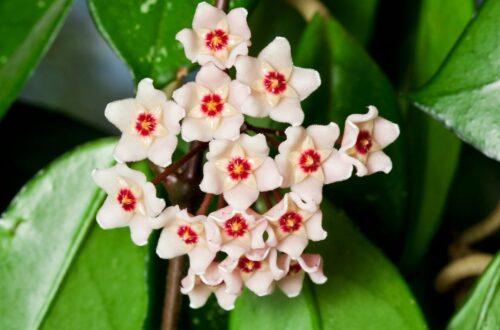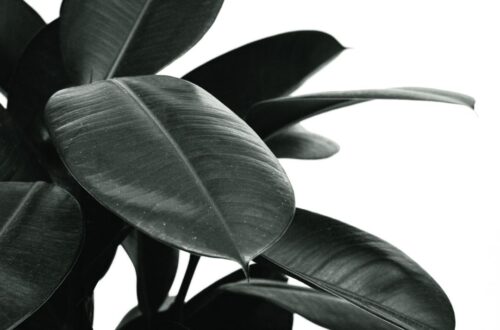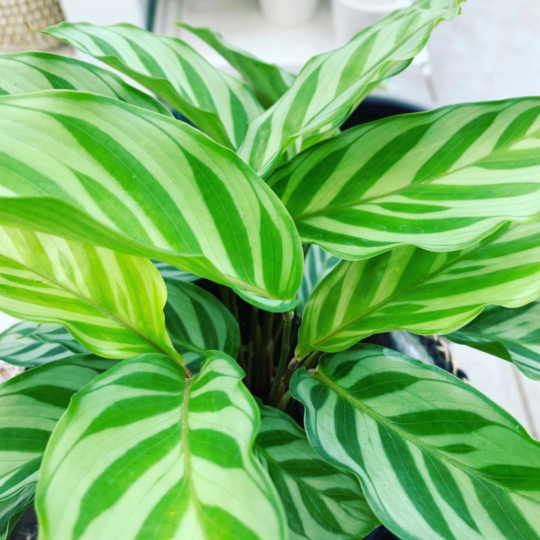
Calathea versus Ctenanthe: What’s the Difference?
Ctenanthe often do not get the press they deserve, especially compared to plants within their own family like Calatheas and even Marantas. You may even see a Ctenanthe mislabelled at a plant store as a Calathea since the differences between the two can be tricky to navigate. So how can you tell if you have a Calathea versus a Ctenanthe houseplant? What is the difference between them, and how can you tell them apart?
While Ctenanthe and Calathea are related to one another as they belong to the same Marantaceae family, they are two different plant genera. However, some minor differences in their appearances will also help you to tell them apart, particularly their leaf shape.
Fortunately, their care needs are very similar due to their fundamental structure, but more species of Ctenanthe are a bit easier to care for than Calathea. We’ll look at the two different genera of plant, how they are both similar and different, and how you can tell which is which when you are at the greenhouse or store, even if they are mislabelled.
Calathea vs Ctenanthe: Taxonomy
While they are related, Ctenanthe and Calathea are two different plant genera. Think of them as cousins rather than siblings. However, there are some fundamental genetic differences between the two of them.
Calathea taxonomy
Calathea has a fascinating history; several hundred Calathea species were re-classified as Goeppertia. Despite the re-classification, many still refer to the Geopperia species as Calathea. We will group them together for this article. Calatheas (and Goeppertia, respectively) are members of the Marantaceae family and are often referred to as “Prayer Plants” due to their nyctinastic movements (their leaves will fold up similar to a praying position in the evening and will bow open during the day).
These plants are native to tropical Americas and have become widely popular as houseplants due to their ornate, beautiful foliage and tolerance for lower light conditions. They famously grow along the forest floor, receiving high humidity, dappled sunlight, and warm temperatures. Natives use Calathea leaves to wrap food such as rice or fish, and they serve as a food source for local herbivores.
Ctenanthe taxonomy
Ctenanthe, as a plant genus, was first described in 1884. Its name comes from the Greek word ktenos, meaning “comb.” and anthera, which means “anther.” It’s thought that it is named for its flower shape. Ctenanthe are also members of the Marantaceae family, so species within the Ctenanthe and Calathea genus have similar physical and behavioral characteristics.
Ctenanthe are native to Central and South America but are most prominent in Brazil. Like Calathea, they make idyllic houseplants as their foliage often has gorgeous patterns. Like Calatheas, they are also floor-dwelling plants that receive dappled sunlight through the above canopy.
What is another name for Ctenanthe?
The Ctenanthe is often called the “Never Never Plant” but is often mislabelled as a “Peacock Plant” or even a Calathea.
Ctenanthe pronunciation
Ctenanthe is pronounced “ten-ann-thee,” which means that the C is silent.
Calathea vs Ctenanthe: Appearance
With both genera of plant displaying a wide range of beautiful, tropical foliage, it can be difficult to identify different markers or traits that are exclusively Calathea or 100% Ctenanthe. Still, there are a few characteristics that set them apart.
Leaf shape
The biggest difference between the two types of genus is the leaf shape. Calathea leaves come in various shapes, from long, lance-shaped leaves to large, rounded ones. Ctenanthe, on the other hand, tend to consistently have oblong leaves. The Ctenanthe’ oppenheimiana’ species has leaves that are slightly more pointed; however, still have a more oblong shape than most Calathea species.
Leaf color
One distinct characteristic of many Calathea is that the backs of their patterned leaves reveal a stunning aubergine color. However, some species do not have this characteristic: the Calathea
Orbifolia, the Calathea Zebrina, and the Calathea Freddie (Calathea Concinna ‘Freddie’). The latter two are the ones that are most often confused with Ctenanthe.
It’s important to note that some Ctenanthe species also have colorful backing to their leaves. In this case, rather than a royal purple color, they are a more burgundy-reddish color, similar to the Stromathe genus.
Growth pattern
The growth pattern between the Ctenanthe and the Calathea is nearly completely identical, most likely because they belong to the same family. New growth emerges at the center of the plant, while the outer leaves will eventually age and die back. New growth occurs from rhizomes beneath the soil. Generally, I have found that Ctenanthe grow taller and wider than most Calathea species. However, this could be because they are better adjusted as houseplants than Calatheas, and some species are a bit hardier.
Comparing Different Species of Ctenanthe to Calathea
Since both genera have a wide range of species with various colors, markings, shapes, and sizes, I thought it might be helpful to compare some of the species most confused with one another and how to identify them.
Ctenanthe Lubbersiana vs Calatheas
This is one of my favorite Ctenanthe species due to its beautiful and sectoral yellow variegation patterns. While different hybrids and cultivars of Calathea are constantly being discovered, you will be hard-pressed to find a Calathea that looks precisely like the lubbersiana, even though they have similar characteristics.
The lubbersiana has a thicker layer of cutin– an epidermal layer on the leaf that provides extra protection from pests and disease. Unsurprisingly, I’ve found this species significantly easier to care for than most Calatheas and Ctenanthe species. That additional protection makes it a bit more tolerant of normal humidity levels, slightly less susceptible to pests, and a bit less fussy overall.
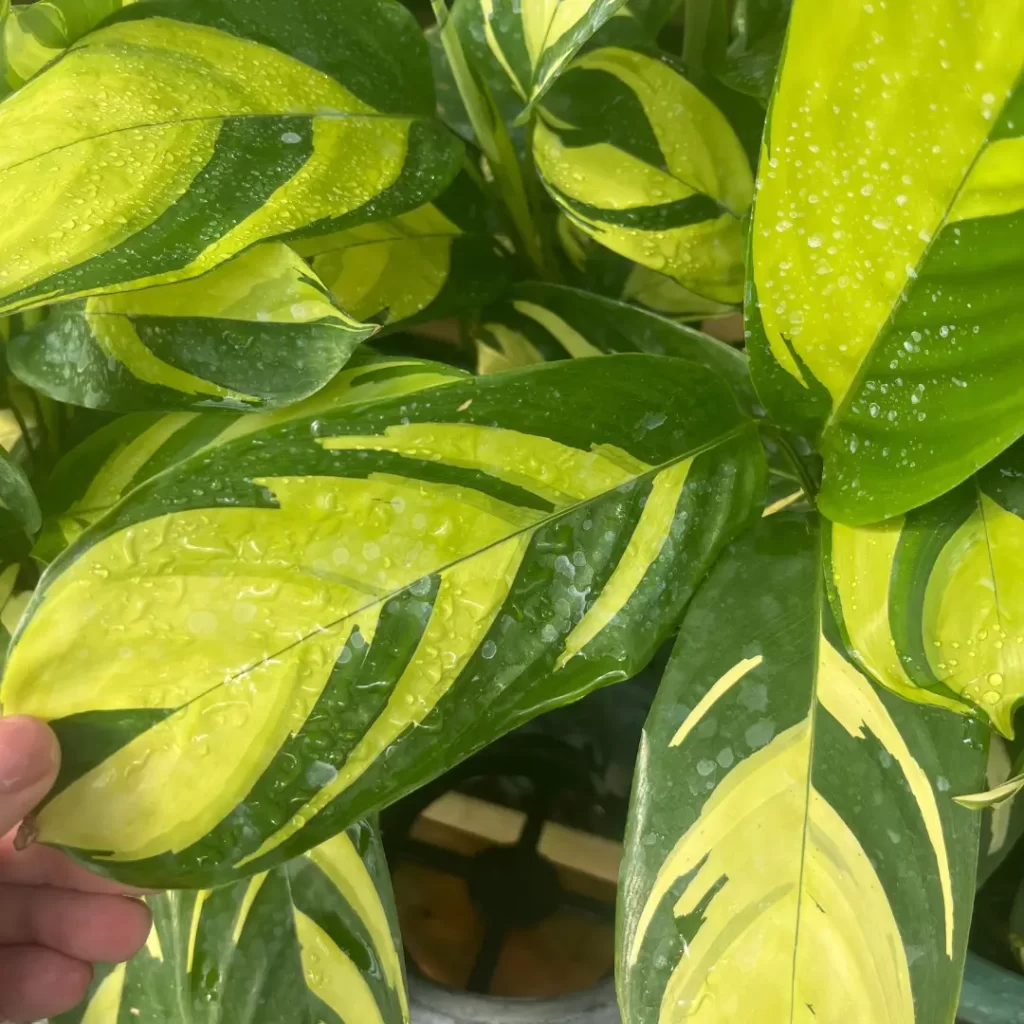
The lubbersiana has the classic oblong-shaped leaves belonging to most Ctenanthe species. That creamy yellow variegation pattern will vary leaf-to-leaf. You’re more likely to find this plant in a big box store than most Calathea species since they are a bit more tolerant and, therefore, easier to get ahold of.
For most Calatheas, the variegation and patterning are either completely uniform or not very close. The biggest exception is the Calathea White Fusion, which has significantly smaller, thinner leaves with a slight purple hue on the backside. In contrast, the Calathea White Fusion is more difficult to care for in the Marantaceae family because it is delicate. Both are very beautiful but entirely different plants.

Ctenanthe Setosa and Ctenanthe Amabilis versus Calathea Concinna
In my opinion, these three plants right here are more likely to stump anyone than the other varieties. These two Ctenanthe have similar foliage patterns to the Calathea Freddie and even have similar leaf shapes if you aren’t inspecting carefully.
It is, however, the leaves that ultimately give them away. Like the Calathea Freddie, the
Ctenanthe Setosa’s leaves are less oblong shaped and come to more of a point. To make matters more confusing, the Freddie does not have purple backing, but many Setosa varieties have a burgundy backing to the leaves. However, the Setosa (and most of the different varieties) have slightly more narrow leaves than the Calathea Freddie. The Calathea Freddie also has an ever-so-slight ripple to the leaves.
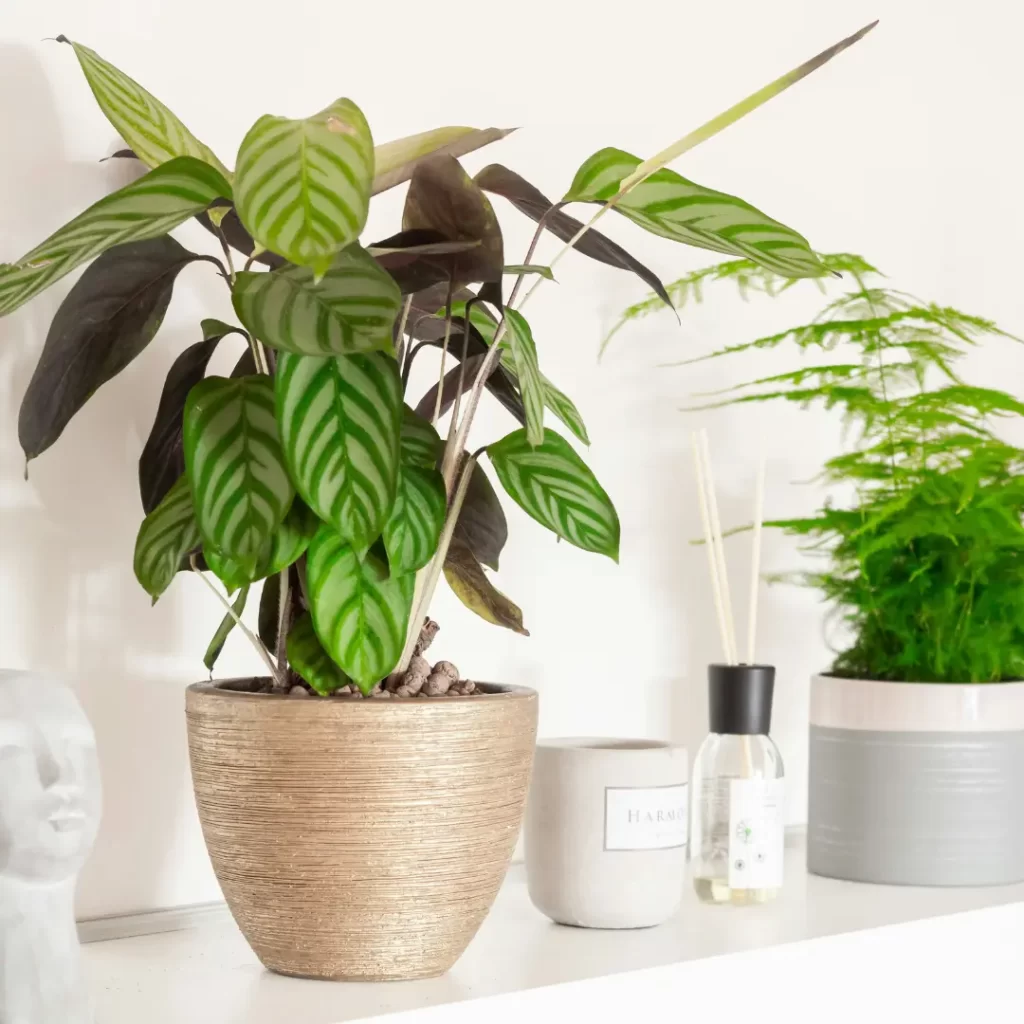
The Ctenanthe Amabilis, on the other hand, has that classic Ctenanthe oblong-shaped leaf but also has a bit of a ripple to the edge and the burgundy backing to the leaf. This makes it easier to discern between the Setosa and the Freddie. But it’s confusing if you don’t know what to look for!
Ctenanthe Oppenheimiana versus Calathea Freddie
The Ctenanthe Oppenheimiana is a stunning plant species and makes a beautiful addition to your home. Still, you can see how easily they can be confused for the Calathea Freddie. Side-by-side, the immediate giveaway between these two is the color. Calathea Freddie has a light green color with darker green patterning. The Ctenanthe Oppenheimiana has a more silvery color with dark green patterning.

Calathea vs Ctenanthe: Care
A running joke with Ctenanthe is that it is nicknamed the Never Never Plant because you should “never-never” let the soil dry out completely. But on the whole, Ctenanthe are slightly more forgiving than Calatheas. Calatheas have a wide range of species, some more difficult than others. But overall, Calatheas have particular care needs such as:
- Consistently moist soil (if you use a moisture meter, water at level 1 or 2)
- High humidity levels (ideally around 60%)
- Warm temperatures
- Medium-light conditions
- A pot with drainage holes and well-draining soil
- Avoid tap water and harsh chemicals
- And checking for pests frequently
If you want to learn more about Calathea Care, check out my Calathea 101 guide, and don’t miss my article on the Secrets to Growing Beautiful Calathea That No One Else Will Tell You.
What about Ctenanthe?
If you care for your Ctenanthe as you would a Calathea, you are sure to have a super happy houseplant on your hands. I tend to loop all my prayer plants into the same care routine. The difference between the Ctenanthe and the Calathea is that your Ctenanthe is slightly more likely to forgive you if you water it a little late. This is particularly true for the Ctenanthe Lubbersiana, because they have that thicker layer of cutin on the leaf.
Propagation
Since they have rhizomes, the Ctenanthe and the Calathea have to be propagated by division. In general, Calathea would rather not have their roots disturbed unless necessary. Still, I have found that Ctenanthe are a bit more hardy to propagate by division and even more tolerant of repotting.
Calathea vs Ctenanthe: is Ctenanthe toxic to pets?
If you’re like me, your pets are members of your family. When choosing a plant, the following is an important question: Are Calatheas and Ctenanthe safe to keep around your pets?
Are Calatheas toxic?
It’s understood that Calathea plants are generally non-toxic to pets. The ASPCA lists Calathea as non-toxic. If my cat is going to attack any of my plants, she is going to go after my Calatheas. Those leaves are tender and taste great for pets. We also spoke earlier that Calatheas are foraged by some herbivores in their natural habitat.

However, my rule of thumb is not to let your pets have free reign to eat any of your houseplants. Keep them out of reach, even if they are considered non-toxic, because there are other potential hazards, such as choking, allergies, or cause for an upset stomach. Should you panic if your cat or dog accidentally got into your Calatheas? No, but I wouldn’t allow them to make it a habit.
It is also worth mentioning that fertilizers, some pest control measures, soils, and fungicide solutions are very toxic to your pets, whether you have used them yourself on your plants or they have been at the garden center. So, while your plant itself may not cause illness, all other factors can result in a toxic plant. As always, if your cat or dog shows any signs of poisoning and gastrointestinal upset, talk to your vet immediately.
Are Ctenanthe toxic?
The ASPCA has long been our go-to resource for determining whether a plant is toxic to pets. As you can see here, they list Prayer Plants as non-toxic, but they include an image of Ctenanthe, which is a bit vague. Given that Ctenanthe belongs to the same family as Marantas and Calatheas, it would be reasonable to assume that the Ctenanthe is pet-safe, too. Again, I would avoid giving your pets access to your Ctenanthe, and if you suspect that your cat or dog has eaten some of the plant, discussing it with your vet and monitoring your pet is always the safest solution. Plants are beautiful to have in our home, but not at the expense of our furry family members.



